Author: Dandan Jie | Source: Cool Labs (ID: coollabs)
“A decade of hardship, yet passion remains.” This phrase perfectly expresses the journey of mainland China in the development of domestic chips. The progress in domestic chip research and development has been minimal in mainland China, but today, Kangaroo Jun will share some lesser-known stories about the people behind domestic chips. You will find that they have been tirelessly working to close the gap in this industry, sacrificing more than just sweat.
The situation with Huawei has escalated.
Even my mother asked me, “Is Huawei going to collapse?”

At this point, my elderly mother even posed an ultimate question, “Are our own chips really viable?“
This reminds me of a video that claims to be “the most powerful interview by CCTV.”
Reporter: How is our steel production capacity currently?
Director Ma: Our steel industry has a long history, and we have a rich workforce.
Reporter: So how is our steel production capacity now?
Director Ma: We are implementing a precision steel strategy to improve equipment levels during the adjustment of our layout, enhance energy conservation and emission reduction, and promote the development of a circular economy.
One dares to ask, while the other has no way to answer.
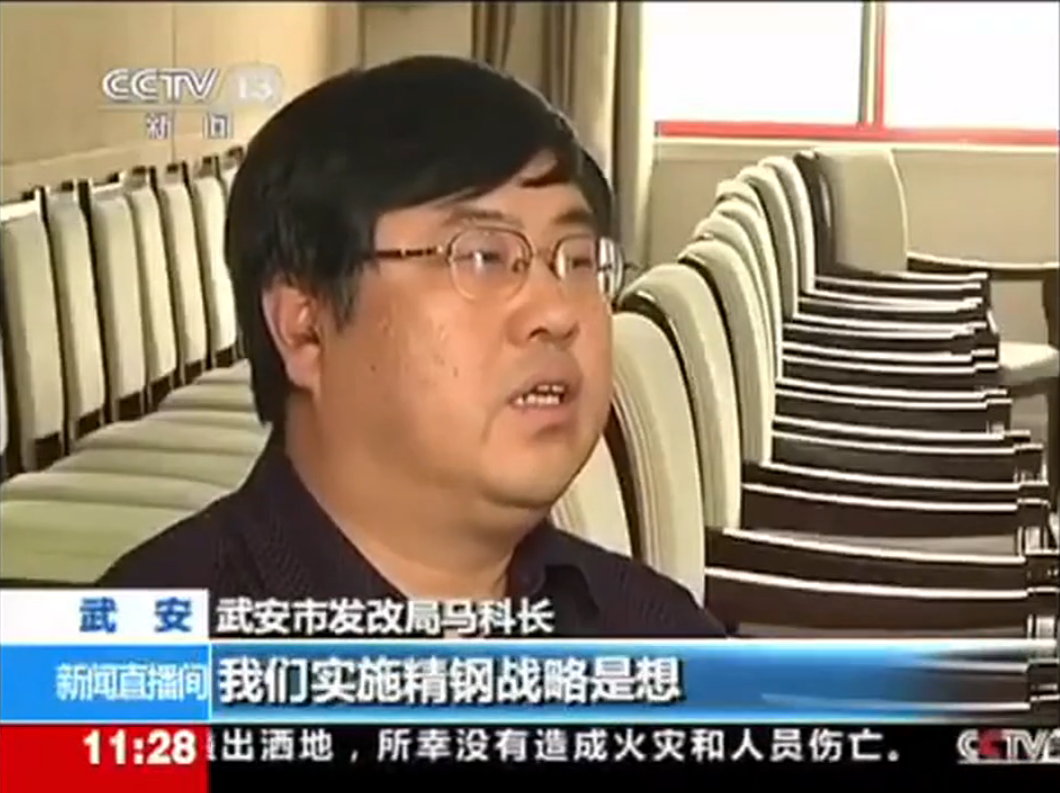
Once TSMC cuts off supply to us, the true state of China’s chip industry is that we are 5-10 years behind the West, if not more.
Chip production is generally divided into three main stages: chip design, chip manufacturing, and chip packaging/testing.
The tools for chip design use foreign EDA software, and even China’s best chip design company, Huawei HiSilicon, has only just begun to “de-Americanize.”
The largest and best chip manufacturer in the world is TSMC. TSMC has already achieved mass production of 5nm process technology, while China’s best chip manufacturer, SMIC, has just completed mass production of 14nm.
Moreover, the photolithography machines used to manufacture the most advanced chips must be imported from ASML in the Netherlands. However, they are currently unavailable for purchase due to U.S. restrictions.
The best photolithography machine manufacturer in mainland China is Shanghai Microelectronics, which currently produces 90nm photolithography machines.
China’s best performance is in the packaging and testing stage. However, the profit margins in this stage are not high.
The reality is that we are lagging behind.
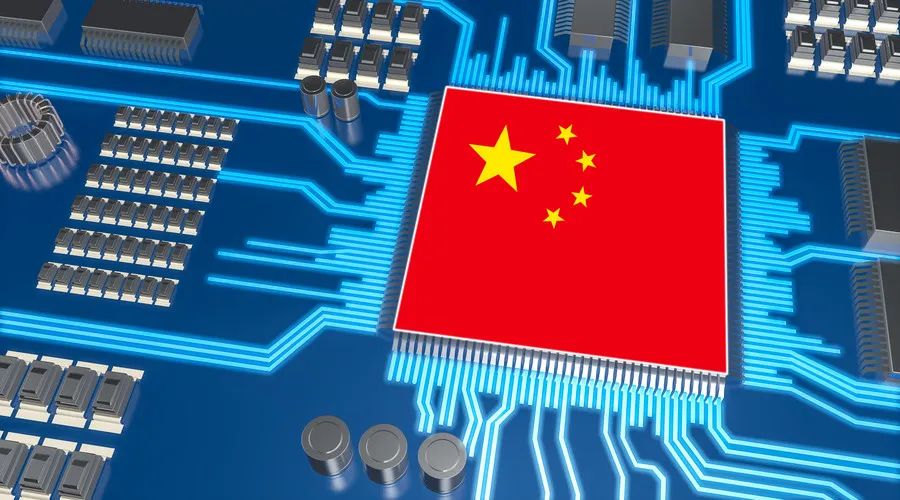
No one cares that the chip industry is an extremely capital-intensive industry, where investments of tens or hundreds of billions yield no visible results.
No one cares that the chip industry is a time-consuming industry, where results may not be seen for years or even decades.
No one cares that the talent gap in the domestic chip industry has reached over 300,000.
No one cares that the chip industry is a “winner takes all” industry—where the leader eats meat, the second drinks soup, the third and fourth lick the bowl, and those behind depend on luck.
Even less do people care that due to the 1996 Wassenaar Arrangement, Chinese engineers cannot enter the core departments of semiconductor companies in Europe and the U.S., and Chinese companies cannot purchase advanced second-generation equipment.
Our latest research shows that they are already using outdated second-generation technology.
No one cares about these issues, as long as foreign chips are available for purchase. Criticism of domestic chips is justified.
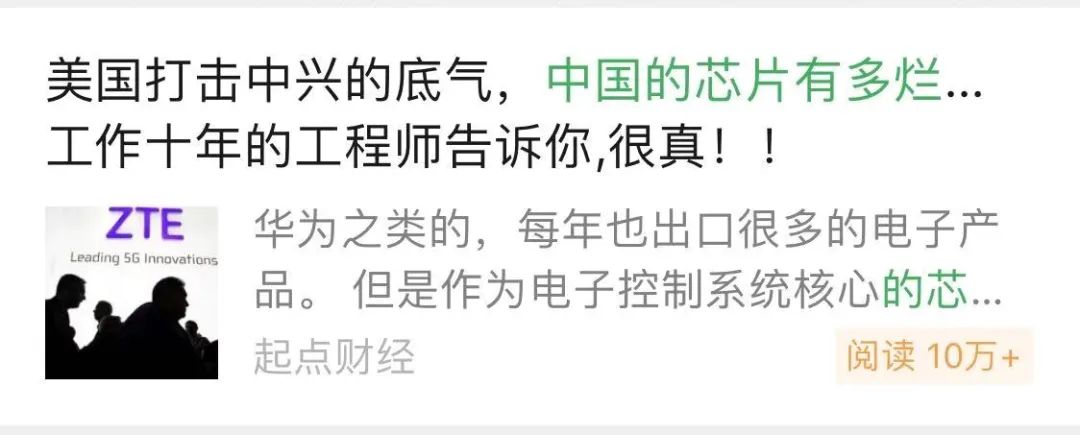
Yet despite this, there remains a large group of people who are committed to this industry and have never left.
A decade of hardship, yet passion remains.
I know their stories. Therefore, I want to say a few words for the domestic chip industry. I fear that if I don’t speak now, it will be too late.
I hope everyone understands that the gap in this industry is widening—the top two in market share will take all the profits. This will allow them to invest more in research and development.
If you find that the mainland chip industry is closing this gap, I hope you understand that they have sacrificed more than just sweat.
01
The first to help Huawei was SMIC. The founder of SMIC is Zhang Rujing.
Before founding SMIC, Zhang Rujing was already a well-known figure in the industry. He worked for the American semiconductor giant Texas Instruments.During his 20 years at Texas Instruments, Zhang Rujing built 9 factories across the U.S., Japan, Singapore, Italy, and other locations.He became recognized in the semiconductor industry as a “factory-building fanatic“. At this time, Zhang Rujing’s father, Zhang Xilun, flew from Taiwan to the U.S. and asked him a question:“When will you build a factory in mainland China?“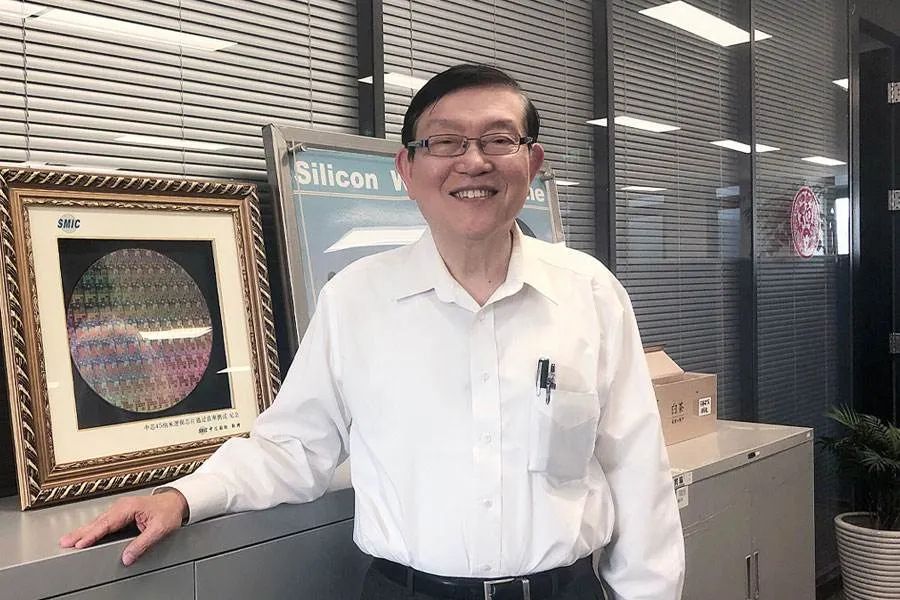 Zhang Xilun was a well-known steel expert in China. During the war, he and his wife led the 21st Arsenal, producing 90% of China’s heavy machine guns.In 1949, he brought his one-year-old son Zhang Rujing to Taiwan.Now that his son has achieved success, he hopes his son can build a chip factory in mainland China.
Zhang Xilun was a well-known steel expert in China. During the war, he and his wife led the 21st Arsenal, producing 90% of China’s heavy machine guns.In 1949, he brought his one-year-old son Zhang Rujing to Taiwan.Now that his son has achieved success, he hopes his son can build a chip factory in mainland China.
The father’s words struck a chord with Zhang Rujing.
The education he received from a young age was “to be proud of being Chinese; we are Chinese“. Now, it was time to contribute to the country.
After a few days of consideration, Zhang Rujing made the most important decision of his life—to resign and return to China to build a factory.
Within a month, he returned to Taiwan and founded World Semiconductor.
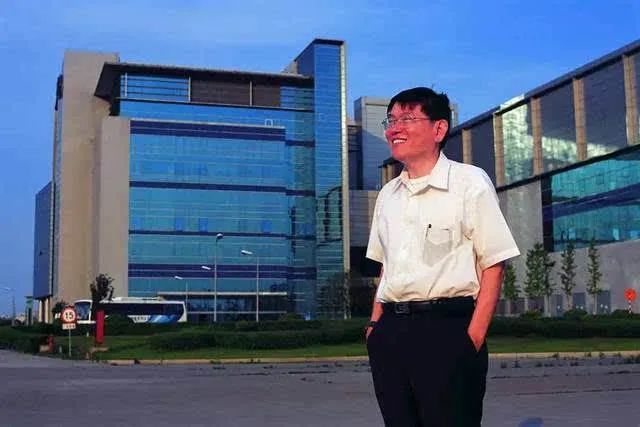
Under Zhang Rujing’s leadership, World Semiconductor quickly built two factories, becoming the third-largest chip company in Taiwan.
The company’s performance also improved significantly.
However, at the same time, World Semiconductor caught the attention of TSMC. In the chip industry, when a rising star appears, the best way to destroy it is to acquire it.
Thus, TSMC initiated an acquisition of World Semiconductor.Zhang Rujing had no objections to this acquisition, as TSMC offered a high price of $5 billion, nearly 8 times the stock price of World Semiconductor at that time.However, Zhang Rujing made one condition: “After the acquisition, the third factory of World Semiconductor must be built in mainland China“.At that time, no one opposed this proposal, and the acquisition was completed quickly.However, after that, Zhang Rujing repeatedly approached TSMC’s management to inquire about building a factory in mainland China, but received no clear response.TSMC was not prepared to fulfill its promise.
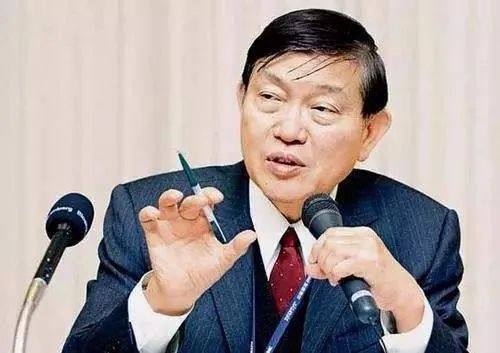
After some consideration, Zhang Rujing decided to resign.TSMC did not agree and warned Zhang Rujing, “If you leave, a large amount of your stock in TSMC will be forfeited.”Then, I will not take it.Money? No; the company? No; the stock? No. Zhang Rujing resolutely left Taiwan, came to mainland China, and prepared to build a factory.This time, Zhang Rujing set his sights on Shanghai.
At that time, the chip manufacturing process in mainland China was stuck at 0.5 microns, stagnant.
Building a wafer processing plant is extremely costly.Even a standard 8-inch production line requires $1 billion.
In this context, Zhang Rujing played the role of a pioneer.
To demonstrate his determination, he moved his wife, children, and even his 90-year-old mother to Shanghai.
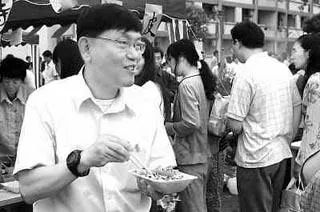
Upon arriving in Shanghai, he found that there was a shortage of talent, equipment, funds, and technology needed to build the factory.
However, when it was learned that Zhang Rujing was going to build a factory in mainland China, not only did over 100 of his former colleagues from Texas Instruments and World Semiconductor follow him, but also over 300 compatriots from Taiwan came to Shanghai with him.
Everyone saw the sense of mission in Zhang Rujing, patriotism and the opportunity to contribute to the country.
This gave Zhang Rujing great joy, as he had the backbone for the initial phase of the factory.
In terms of funding, Zhang Rujing used all the resources and reputation he had accumulated over 20 years. In just one year, he miraculously raised $1 billion.
It is worth noting that the largest electronic industrial project since the founding of China—the 909 Project—initially had an investment of 10 billion RMB.
Zhang Rujing alone was equivalent to a national project.
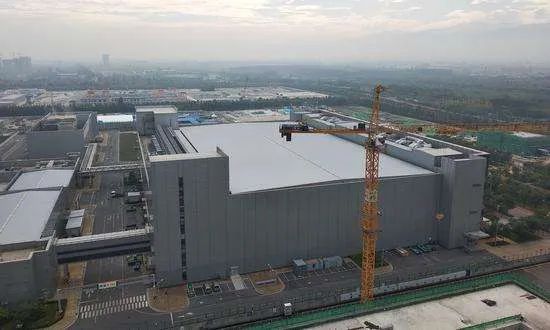
After solving the talent and funding issues, technology and equipment became the biggest problem.After the Cold War, Western countries, led by the U.S., signed the Wassenaar Arrangement. This agreement restricts the export of advanced materials, electronic devices, military products, and various goods or technologies.China is classified as a “prohibited country” under this agreement.Even if China offers prices that other countries find hard to refuse for technology, the U.S. will intervene and directly interrupt the transaction.To purchase advanced equipment and technology, Zhang Rujing sought endorsements from the five major churches in the U.S.He repeatedly promised that the products of SMIC would only be used for commercial purposes and not for military applications, which finally secured U.S. export licenses.Everything was ready, just waiting to start construction.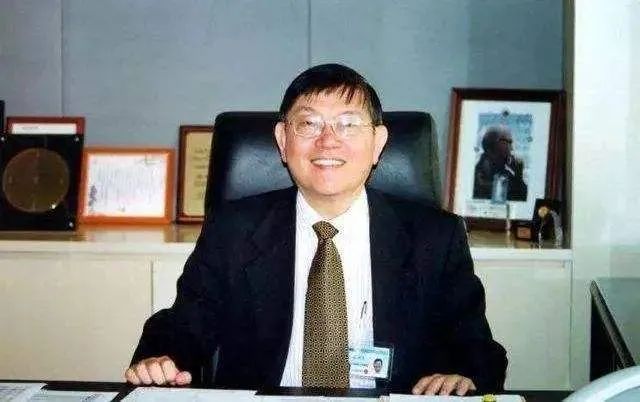 On August 1, 2000, SMIC began construction, and just 13 months later, in September 2001, SMIC officially commenced production.13 months also set a world record for the speed of wafer processing plant construction.At the same time, SMIC’s production line below 0.25 microns also pushed mainland chips into the nanometer level for the first time.
On August 1, 2000, SMIC began construction, and just 13 months later, in September 2001, SMIC officially commenced production.13 months also set a world record for the speed of wafer processing plant construction.At the same time, SMIC’s production line below 0.25 microns also pushed mainland chips into the nanometer level for the first time.
To attract more overseas talent and Chinese nationals to return, Zhang Rujing built the SMIC International School around the factory, from kindergarten to high school.Additionally, some workers could further their education at Shanghai Microelectronics Institute—something they had never dared to dream of before.Meanwhile, over 1,500 housing units were also built.Family, dreams, and careers could all be found at SMIC. In this atmosphere, SMIC continuously attracted overseas talent.
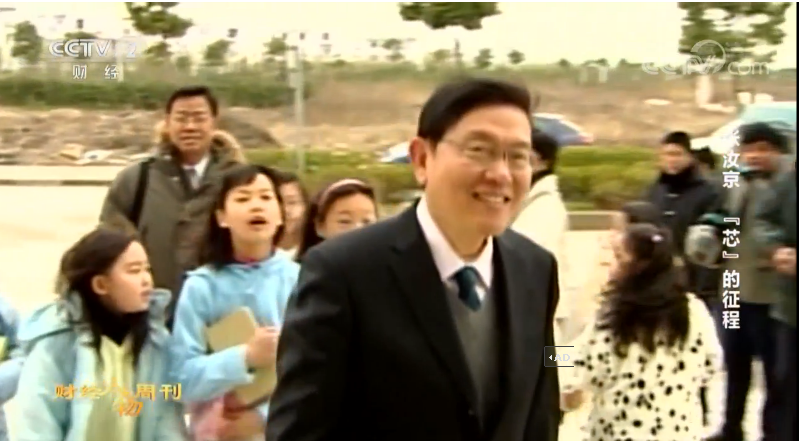
With a sense of belonging, work efficiency naturally improved.In just three years, SMIC had 4 eight-inch production lines and 1 twelve-inch production line.
It is no exaggeration to say that these three years accelerated the development of the mainland chip industry by 30 years.
By 2003, with everyone united, SMIC proudly erected six factories, achieving a 90nm integrated circuit line width, becoming the third-largest foundry in the world.
The mainland chip manufacturing industry welcomed its brightest moment.
02
However, TSMC has been keeping an eye on Zhang Rujing.
In fact, not only TSMC, but when Zhang Rujing left with over 300 people, the Taiwanese were also alarmed.
In 2000, the Taiwanese authorities fined Zhang Rujing $150,000 on unfounded charges and warned him to withdraw his investments from mainland China immediately.
But Zhang Rujing did not back down, announcing his renunciation of Taiwanese citizenship.
The Taiwanese government was furious but could do nothing, so they prohibited all Taiwanese tech companies from entering mainland China.
Meanwhile, TSMC began its own operations.
They had been quietly preparing, waiting to deliver a fatal blow to Zhang Rujing and SMIC.
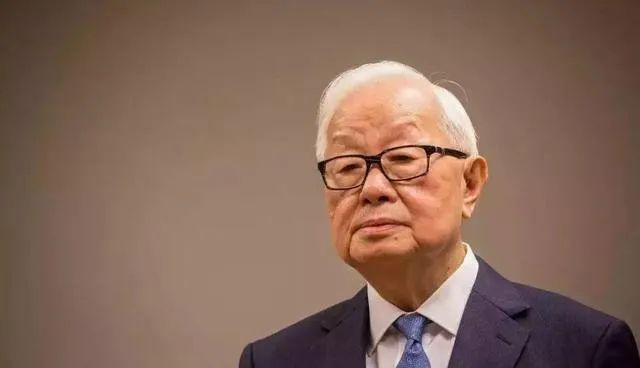
(TSMC founder Morris Chang)
In August 2003, SMIC was about to go public in Hong Kong.
Just days before the IPO, TSMC sued SMIC in California, USA, seeking $1 billion in damages.
TSMC did not sue SMIC for patent infringement, as both parties had long engaged in cross-licensing of patents.
TSMC’s lawsuit was based on the claim that SMIC employees had stolen TSMC’s trade secrets.
Many of SMIC’s engineers came from TSMC, which put Zhang Rujing at a disadvantage—engineers might inadvertently use TSMC’s menus and other information in certain projects.
These details are hard to clarify.
It is important to note that in 2003, SMIC’s revenue was only $360 million. Losing this lawsuit would be equivalent to a death sentence for SMIC.
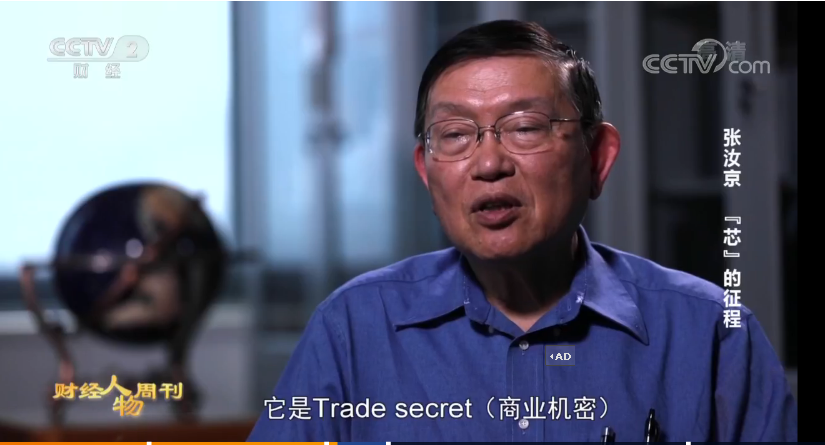
The lawsuit dragged on for two years, and SMIC could not hold out any longer. SMIC chose to settle out of court, agreeing to pay TSMC $175 million in six installments.
Due to the lack of professional lawyers at the time, SMIC was also tricked by TSMC in the “settlement agreement”.
TSMC set up a “third-party escrow account”.
SMIC had to deposit all its technology into this account for TSMC to “freely inspect”.SMIC’s core competitiveness and most confidential parts were subject to TSMC’s scrutiny.
This made it much easier for TSMC to find trouble with SMIC.
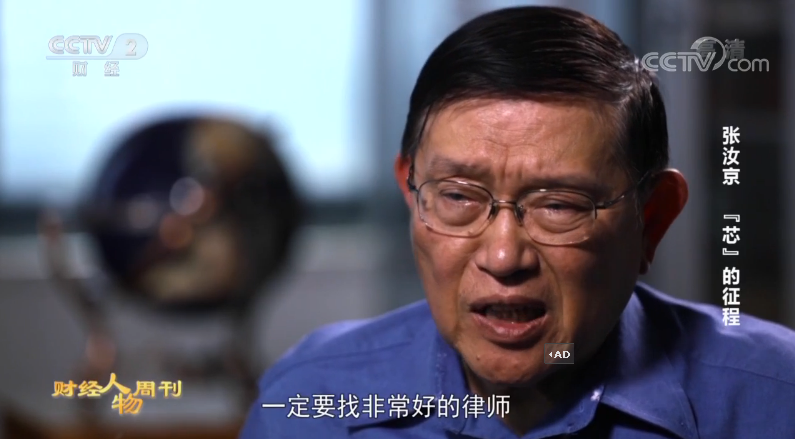
One year and seven months after the “settlement agreement” was reached, TSMC sued SMIC again, accusing SMIC of violating the “settlement agreement”.
TSMC demanded that SMIC pay the remaining $130 million of the settlement in one lump sum and accused SMIC of infringing on TSMC’s patents in 82% of the 0.13-micron process.
At that time, everyone at SMIC believed that reaching a settlement was a good thing for the company’s long-term development.
They were all doing their best to comply with the “settlement agreement”.
This lawsuit was essentially malicious competition, deliberately destructive. The main reason for this could be that SMIC’s technology had reached the threshold of 45nm at that time.
Even Japanese media at the time stated, “TSMC is far ahead internationally, but in the mainland market, it is falling behind SMIC. Preventing SMIC from growing larger is the real reason TSMC sued SMIC.“
SMIC’s response was also very strong, firmly denying any infringement and preparing ample evidence.
Everyone in the company believed that this accusation was “groundless” and that they could win this lawsuit.
The entire company was operating normally, and Zhang Rujing was also working as usual.
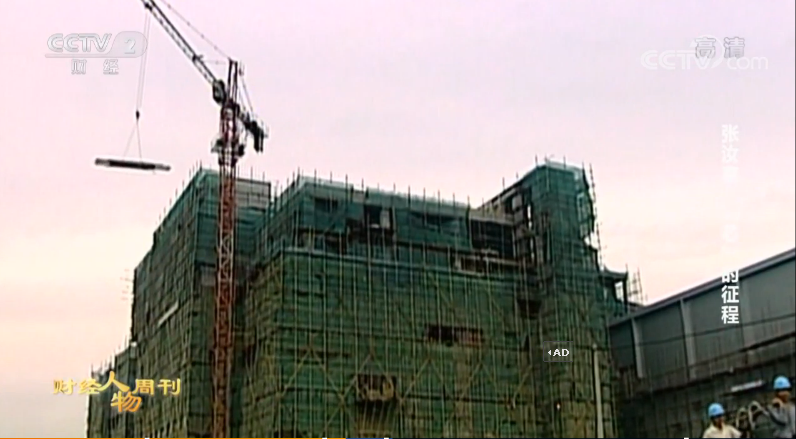
Just one day before the verdict, Zhang Rujing was still convening project teams for regular meetings and arranging daily work.
However, SMIC lost again.
The cost this time was even more painful—in addition to the $175 million, they had to pay another $200 million, plus 10% of their shares.
As a result, SMIC basically lost its competitiveness.
Moreover, TSMC also made a demand: Zhang Rujing must leave SMIC.
Upon learning the verdict, Zhang Rujing cried out on the phone.
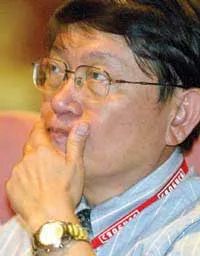
Three days later, he resigned in disgrace.
Before leaving, TSMC required him to sign a non-compete agreement—for three years starting from 2010, he could not engage in any chip-related work.
After saying, “I take responsibility for this,” and reminding his colleagues, “Don’t get knocked down” he left SMIC, where he had fought for nine years.
The light that had just ignited in the mainland chip industry was extinguished.
03
After Zhang Rujing left SMIC, a person named Jiang Shangzhou took over SMIC.
A few years ago, it was Jiang Shangzhou who received Zhang Rujing and played a key role in establishing SMIC in Shanghai.
Besides recognizing Zhang Rujing’s capabilities, few people know that in 1998, Jiang Shangzhou carefully studied the semiconductor industry in Taiwan.He then concluded:
“If Shanghai supports the semiconductor industry at this time, then from 2015 to 2020,the technology level and production scale of Shanghai’s integrated circuit production lines may surpass that of Taiwan.”
We have always said that Shanghai does not believe in the internet.
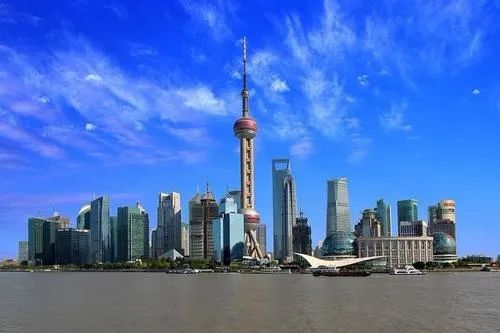
Among China’s three major internet giants, BAT (Baidu, Alibaba, Tencent), Baidu is in Beijing, Alibaba is in Hangzhou, and Tencent is in Shenzhen.In fact, Jack Ma initially started his business in Shanghai. However, no one in Shanghai believed in what he was saying, and he couldn’t recruit anyone, so he had to return to his hometown of Hangzhou.In 2008, the Shanghai municipal secretary even specifically asked all relevant staff to reflect on, “Why can’t Shanghai retain Jack Ma?“Moreover, “It is regrettable that Shanghai lost such a giant enterprise developed from a small business“.For a long time, the great city of Shanghai, China’s financial center, had as its most prominent internet enterprise, only a dating site. Because Shanghai chose to believe in the semiconductor industry.During the past “golden twenty years of the internet”, the Shanghai government invested heavily in the semiconductor industry to support the development of domestic chips.What they first reaped was a carefully packaged scam and ridicule from around the world.On February 26, 2003, leaders from all walks of life in Shanghai attended a press conference. This press conference was personally hosted by the Shanghai government news office, and the mayor of Shanghai excitedly introduced to the nation:“This is Shanghai’s technological image“.The product released was called “Hanxin No. 1“—a chip capable of performing 200 million operations per second. Its performance even surpassed that of Intel’s products at the time.Such a product took Intel 40 years to develop, while “Hanxin No. 1” was developed in just 16 months.Professor Chen Jin, the inventor of “Hanxin No. 1”, was hailed by many media outlets as the “new father of domestic chips”.With such achievements, Shanghai naturally continued to increase its investment. At the same time, various titles such as “Shanghai’s Leading Technological Entrepreneur” and “Dean of the Microelectronics Institute of Shanghai Jiao Tong University” were awarded to Chen Jin.In a short time, Chen Jin gained both fame and fortune.
Because Shanghai chose to believe in the semiconductor industry.During the past “golden twenty years of the internet”, the Shanghai government invested heavily in the semiconductor industry to support the development of domestic chips.What they first reaped was a carefully packaged scam and ridicule from around the world.On February 26, 2003, leaders from all walks of life in Shanghai attended a press conference. This press conference was personally hosted by the Shanghai government news office, and the mayor of Shanghai excitedly introduced to the nation:“This is Shanghai’s technological image“.The product released was called “Hanxin No. 1“—a chip capable of performing 200 million operations per second. Its performance even surpassed that of Intel’s products at the time.Such a product took Intel 40 years to develop, while “Hanxin No. 1” was developed in just 16 months.Professor Chen Jin, the inventor of “Hanxin No. 1”, was hailed by many media outlets as the “new father of domestic chips”.With such achievements, Shanghai naturally continued to increase its investment. At the same time, various titles such as “Shanghai’s Leading Technological Entrepreneur” and “Dean of the Microelectronics Institute of Shanghai Jiao Tong University” were awarded to Chen Jin.In a short time, Chen Jin gained both fame and fortune.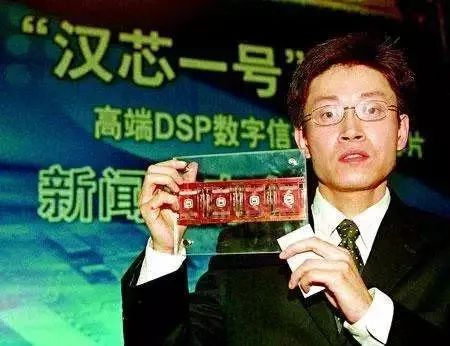 Three years later, Chen Jin was exposed for “sanding off the logo on Motorola chips and rebranding them as ‘Hanxin'”.The so-called “first domestic chip” was developed with a piece of sandpaper.Once the news was confirmed, it caused a huge uproar. Chen Jin became a pariah, and the domestic chip industry was ridiculed worldwide.U.S. media directly stated, “Chinese people only have the ability to copy; they will never be able to truly develop chips“.The most hurt was Shanghai.Would they continue to support it? No, didn’t they say, “Once bitten by a snake, ten years afraid of a rope”? Moreover, internet companies are so profitable; why bother with the chip industry, which is “money-consuming and labor-intensive”?Logically, Shanghai should be the most “calculating” province or city in China.But it still persisted—continuing to pour various resources into a place called Zhangjiang Hi-Tech Park.
Three years later, Chen Jin was exposed for “sanding off the logo on Motorola chips and rebranding them as ‘Hanxin'”.The so-called “first domestic chip” was developed with a piece of sandpaper.Once the news was confirmed, it caused a huge uproar. Chen Jin became a pariah, and the domestic chip industry was ridiculed worldwide.U.S. media directly stated, “Chinese people only have the ability to copy; they will never be able to truly develop chips“.The most hurt was Shanghai.Would they continue to support it? No, didn’t they say, “Once bitten by a snake, ten years afraid of a rope”? Moreover, internet companies are so profitable; why bother with the chip industry, which is “money-consuming and labor-intensive”?Logically, Shanghai should be the most “calculating” province or city in China.But it still persisted—continuing to pour various resources into a place called Zhangjiang Hi-Tech Park.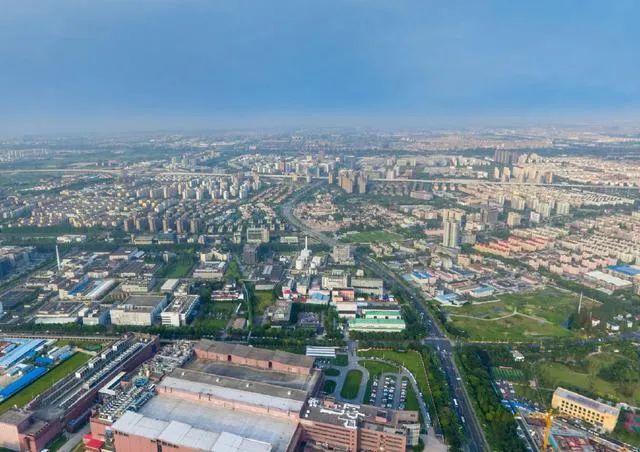
This time, they got SMIC.
In the initial years, SMIC’s development exceeded everyone’s expectations. Jiang Shangzhou’s judgment seemed to be turning into reality.
However, the collision with TSMC and Zhang Rujing’s departure still left Jiang Shangzhou’s aspirations unfulfilled.
He didn’t even have the chance to witness the scene—after two years of leading SMIC, Jiang Shangzhou passed away due to illness.
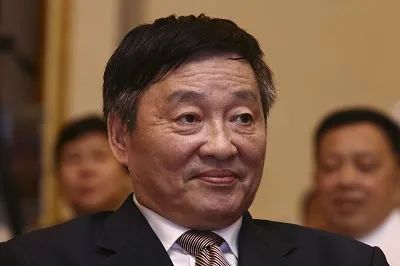
At that time, SMIC was in a precarious situation.
It was during a downturn in the entire chip industry, compounded by the impact of the financial crisis, that SMIC was losing money every year.
By 2010, SMIC had lost 3 billion.
Fortunately, the foundation laid by Zhang Rujing remained, stabilizing SMIC’s basic operations.
However, the loss of competitiveness meant that SMIC was falling further behind TSMC—TSMC’s annual R&D expenses were even greater than SMIC’s over 20 years.
To “survive”, SMIC could only “pick up” what TSMC left behind. When TSMC upgraded its technology and abandoned certain market segments, SMIC would take over.
When 4G emerged, TSMC had already begun using 10nm technology, while SMIC had just started mass production of 28nm.
At this time, Liang Mengsong joined SMIC.
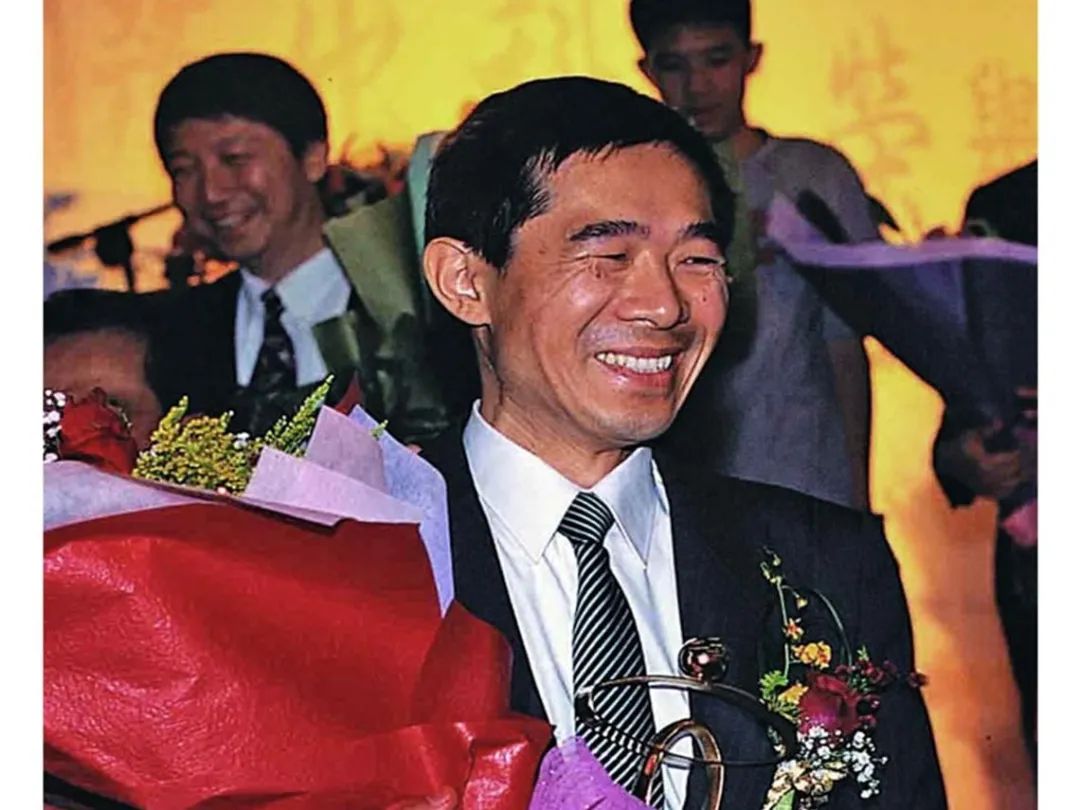
Liang Mengsong was also a former TSMC employee. After leaving TSMC, he joined Samsung as the head of R&D, upgrading Samsung’s manufacturing technology directly from 28nm to 14nm.
TSMC also sued Liang Mengsong, claiming that he had “leaked TSMC’s trade secrets to Samsung”.
The final result was similar to Zhang Rujing’s—he was restricted from working in any capacity in the semiconductor industry for three years, and after the restriction ended, he could not work for TSMC’s competitors.Perhaps the similar experience led him to choose to join SMIC.298 days after Liang Mengsong joined SMIC, the company conquered the 14nm process technology.At the same time, it also made progress in equivalent 7nm process technology.This meant that SMIC could provide products for the “first tier” of performance machines.Huawei also officially began cooperating with SMIC at this time.
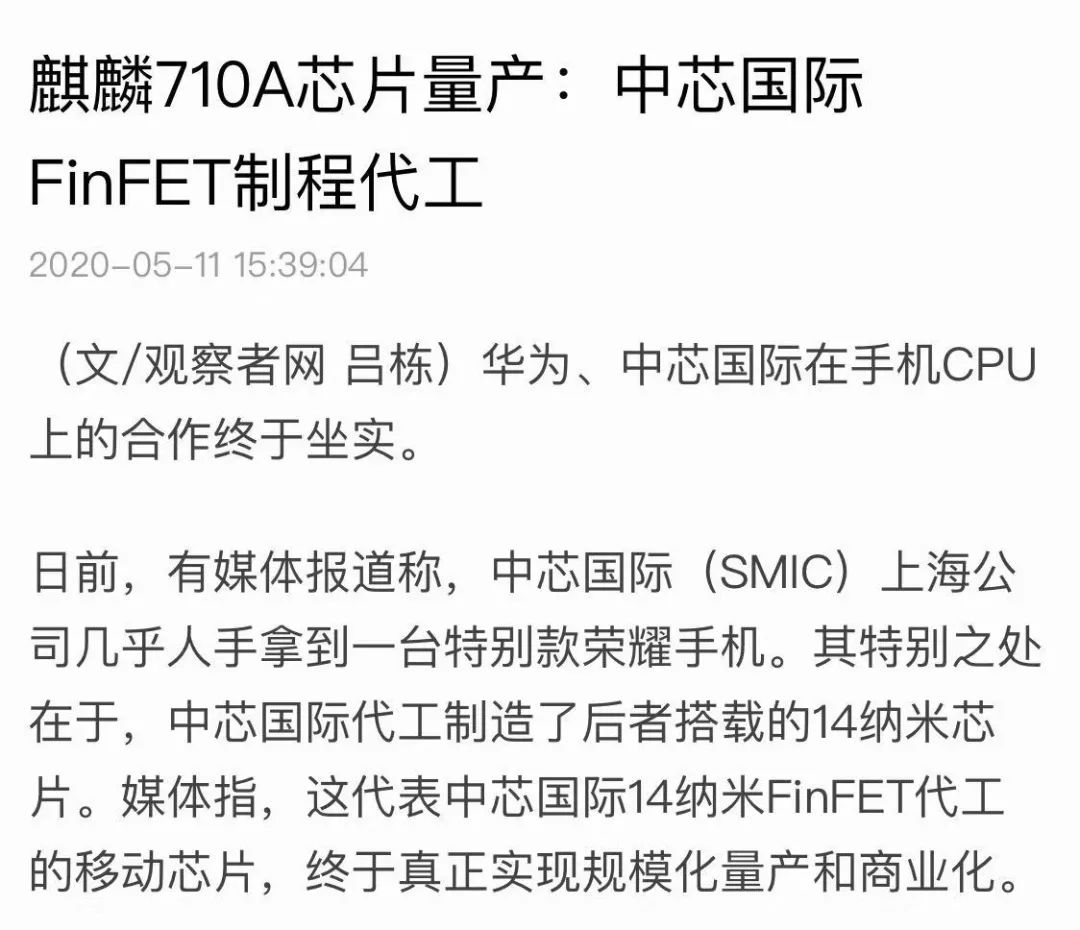
Just as SMIC was thriving, the 61-year-old man who was forced to leave SMIC had already begun his third entrepreneurial venture.When signing the non-compete agreement, he was told he could work in the fields of LED and solar energy.After leaving SMIC, he established a new factory to produce chips for LED products.The new field was not too difficult, and there were even rumors that Zhang Rujing was preparing to retire and engage in education or charity work.And Zhang Rujing completely disappeared from the public eye.In 2014, a new company called Shanghai Xinsheng was established in Lingang New City, Shanghai.
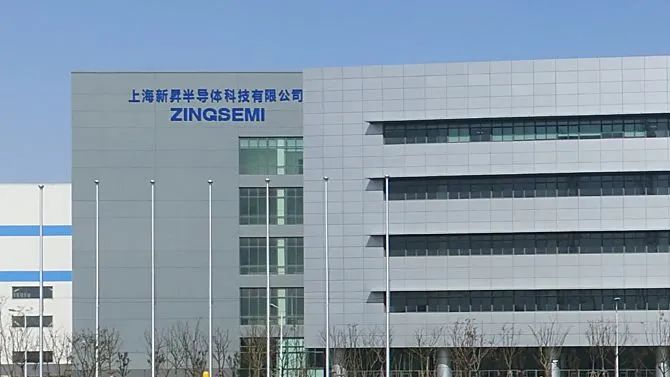
The most significant material cost in chip production is silicon. The development of silicon wafer technology mainly follows two paths: one is increasing purity, and the other is increasing size.The larger the silicon wafer, the more chips can be cut from it, and the lower the cost.Shanghai Xinsheng focuses on producing large silicon wafers. It was later acquired by Shanghai Silicon Industry Group.On April 20, 2020, Shanghai Silicon Industry Group went public, and its stock price surged by 180% on the first day.And the founder of Shanghai Xinsheng is Zhang Rujing.He was 67 years old that year.
In terms of results, Zhang Rujing is a failed entrepreneur. He started three businesses and was forced to leave each time.
In reality, Shanghai’s 20 years of investment have been a failure.The development of the mainland chip industry has been a failure—we have a visible gap from the world’s top level.
However, every person who has contributed to this industry deserves to be remembered.They started from scratch and developed the mainland chip industry to where it is today.
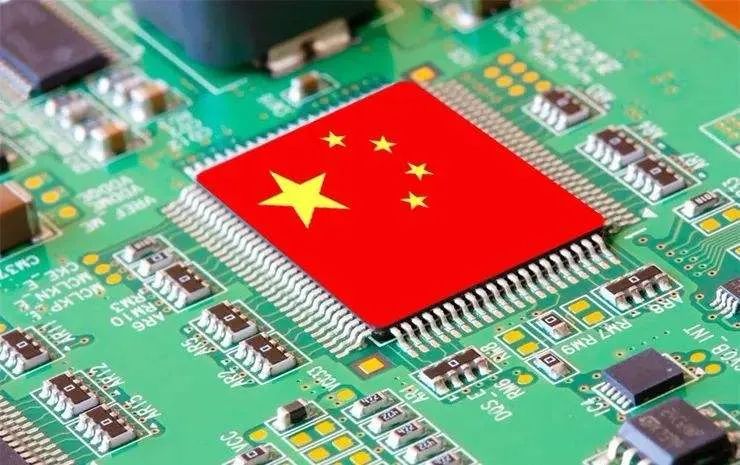
Indeed, this industry is not yet strong.But they gave up favorable environments and potentially brighter futures because they all held a belief:China cannot be without “chips”! We cannot be choked by others in the chip industry.At least, we are already on the road.On May 6, 2020, an authoritative third-party semiconductor research organization released the global top ten semiconductor sales rankings, and Huawei HiSilicon made history by entering the list for the first time, ranking 10th.
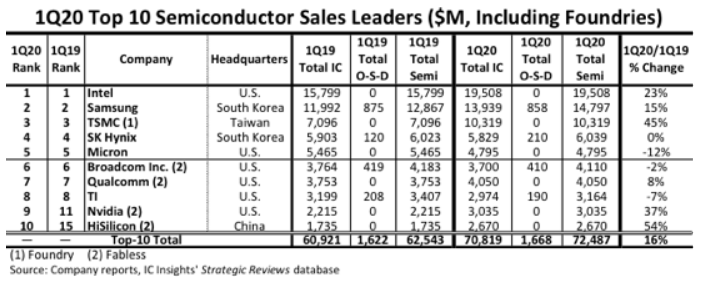
On May 15, 2020, the National Integrated Circuit Fund and the Shanghai Integrated Circuit Fund announced an investment of 16 billion RMB in SMIC.SMIC also made breakthroughs in “N+1” and “N+2” technologies, achieving performance roughly equivalent to TSMC’s 7nm chips.What about Shanghai, which has been the lifeblood of mainland chips for 20 years?
If you open the map of mainland chips, SMIC, Spreadtrum, RDA, and XMC… these new forces in the domestic chip industry are all in Shanghai.
They also account for nearly 50% of the output value of the mainland chip industry.
During the most golden twenty years of the internet, Shanghai chose to persevere. It used 20 years of investment to leave the last torch for the mainland chip industry.
Now, the torch has begun to blaze.
To this day, many people remember Jiang Shangzhou’s words, “The technology level and production scale of Shanghai’s integrated circuit production lines may surpass that of Taiwan.“The last twenty years did not belong to the mainland chip industry, nor to Shanghai.What about the next twenty years?I am reminded of the phrase, “When the king’s army conquers the Central Plains, do not forget to inform the ancestors at home.”Salute to all those who have fought for the mainland semiconductor industry and China’s semiconductor industry!PS:
At the end of this story about mainland chips, there is a little Easter egg—In 2018, Mr. Zhang Rujing began his fourth entrepreneurial venture.
He founded the first CIDM model semiconductor company in China.IDM is a model where the design, manufacturing, and packaging/testing of chips are independently completed by one company. This model requires significant funding and talent.CIDM is a shared IDM model. Compared to TSMC’s production-focused model, it is currently the best choice for the mainland.Zhang Rujing also stated that this would not be his last entrepreneurial venture.We believe so.At the same time, we also believe that the story of mainland chips is just beginning.
End
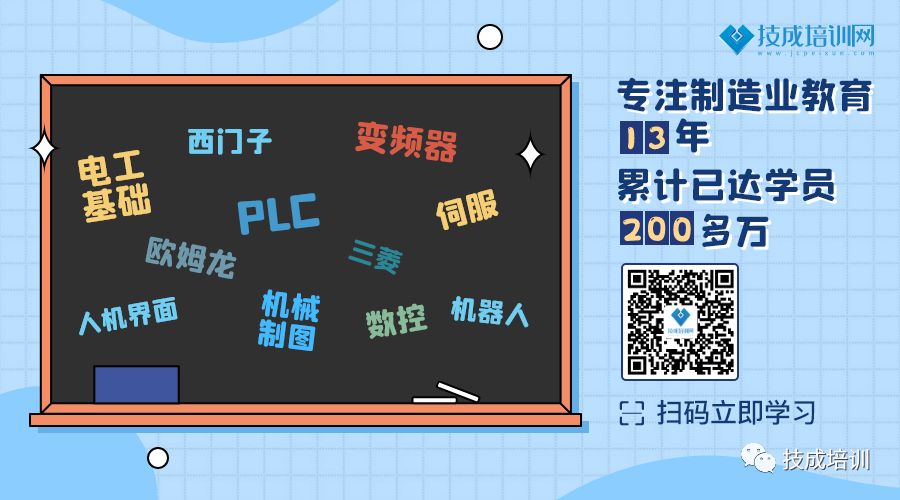
 Like it? Click here
Like it? Click here 